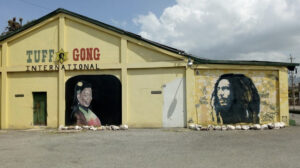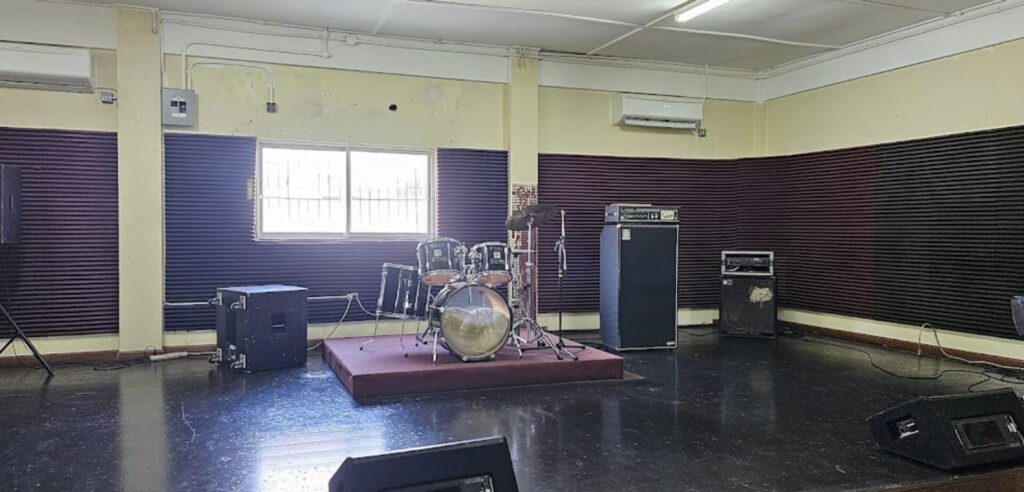 In the vibrant tapestry of Jamaican music history, few figures loom as large as Bob Marley, and few institutions hold as much significance as Tuff Gong Studios. Together, they not only shaped the genre of reggae but also left an indelible mark on the global musical landscape.
In the vibrant tapestry of Jamaican music history, few figures loom as large as Bob Marley, and few institutions hold as much significance as Tuff Gong Studios. Together, they not only shaped the genre of reggae but also left an indelible mark on the global musical landscape.
Bob Marley: Reggae’s Musical Architect
Bob Marley, born Robert Nesta Marley, emerged from humble beginnings in rural Jamaica to become a cultural icon and musical prophet. His lyrics, infused with messages of peace, love, and social justice, resonated with audiences far beyond the shores of his island home.
Marley’s music was not just entertainment; it was a potent force for change. Songs like “One Love,” “Redemption Song,” and “Get Up, Stand Up” became anthems for the oppressed and dispossessed, inspiring movements for equality and liberation around the world.
The movie “One Love” took music lovers on a tour of Jamaica through Bob Marley’s eyes. Take a look at a short that focuses on some of the film’s key locations.
But Marley’s influence extended beyond his lyrical prowess. His distinctive vocal style, blending elements of reggae, ska, and rocksteady, helped define the sound of Jamaican music and the studio he founded set the stage for its global ascent.

Tuff Gong Studios: The Heartbeat of Reggae
At the heart of Jamaica’s musical revolution stood Tuff Gong Studios, founded by Bob Marley in the early 1970s. Named after Marley’s nickname, “Tuff Gong” became the epicenter of reggae innovation, attracting a constellation of talent and creativity.

Record presses were used to create acetates and dub plates for DJs around the world.
Tuff Gong Studios provided a home for reggae’s brightest stars, including The Wailers, Peter Tosh, and Bunny Wailer, offering them a space to experiment, collaborate, and refine their craft. Its state-of-the-art facilities and pioneering production techniques helped elevate reggae from a local phenomenon to a global sensation.
Beyond its role as a recording studio, Tuff Gong became a cultural hub, hosting jam sessions, concerts, and community events that celebrated Jamaica’s rich musical heritage. Its influence reverberated throughout the Caribbean and beyond, inspiring generations of artists and musicians to embrace the rhythms of reggae.
The story of Bob Marley and Tuff Gong Studios is not just a chapter in the history of Jamaican music; it is a testament to the power of art to transcend boundaries, unite communities, and inspire change. Their legacy continues to resonate, reminding us that the rhythms of reggae are more than just music—they are a heartbeat, a voice, and a force for hope in a troubled world.
References and Books To Learn More
1. “Catch a Fire: The Life of Bob Marley” by Timothy White – This comprehensive biography offers a deep dive into the life and legacy of Bob Marley, exploring his music, his activism, and his enduring impact on popular culture.
2. “The Harder They Come: A Novel” by Michael Thelwell – While primarily a work of fiction, this novel provides valuable insights into the social and political context that shaped the emergence of reggae music in Jamaica.
3. “So Much Things to Say: The Oral History of Bob Marley” by Roger Steffens – Drawing on interviews, anecdotes, and archival material, this book offers a vivid portrait of Bob Marley’s life and times, from his early days in Trench Town to his rise to international stardom.
4. “Reggae Routes: The Story of Jamaican Music” by Kevin Chang and Wayne Chen – This seminal work traces the evolution of Jamaican music from its roots in African rhythms and slave chants to the rise of reggae as a global phenomenon. It provides valuable context for understanding the cultural significance of Tuff Gong Studios and its role in shaping the reggae genre.
